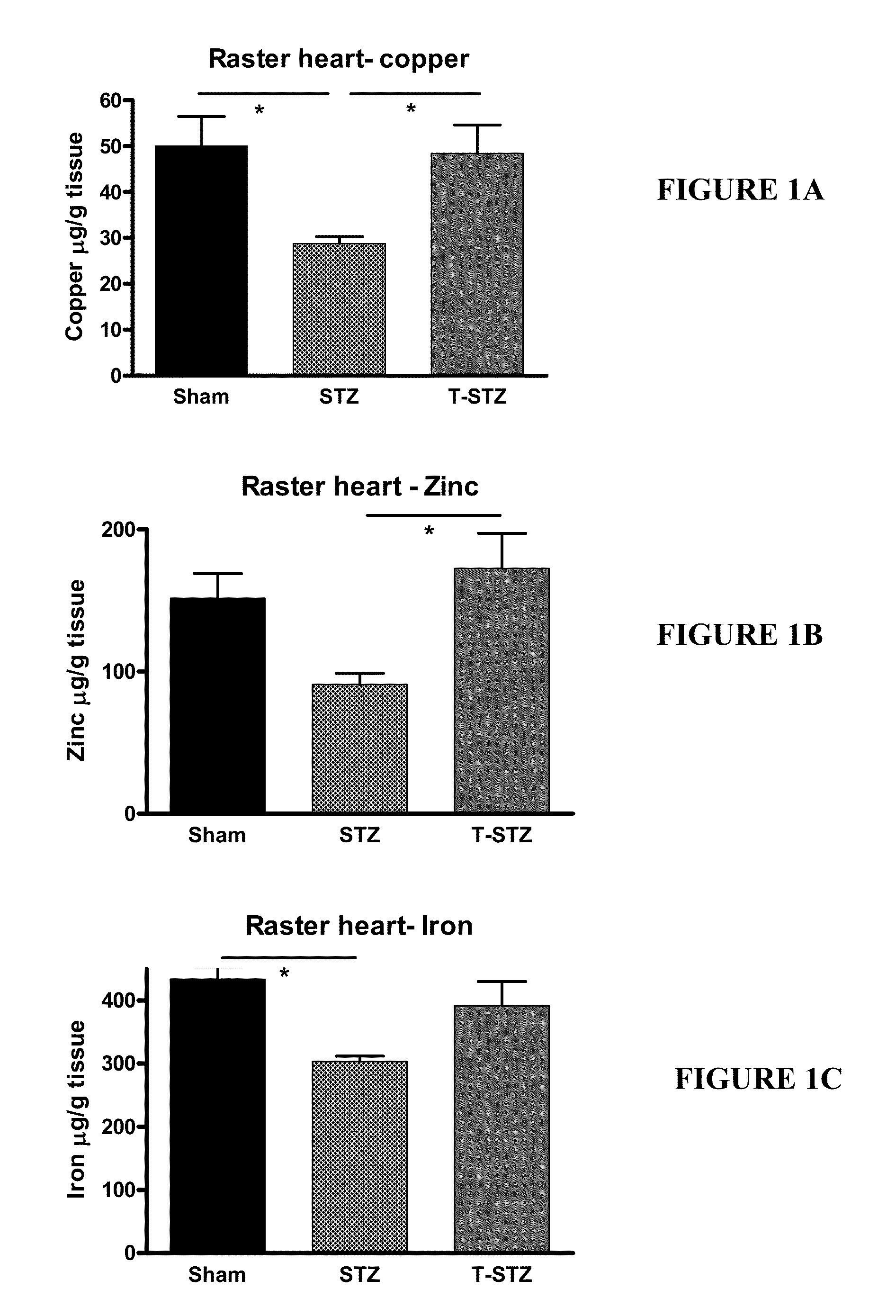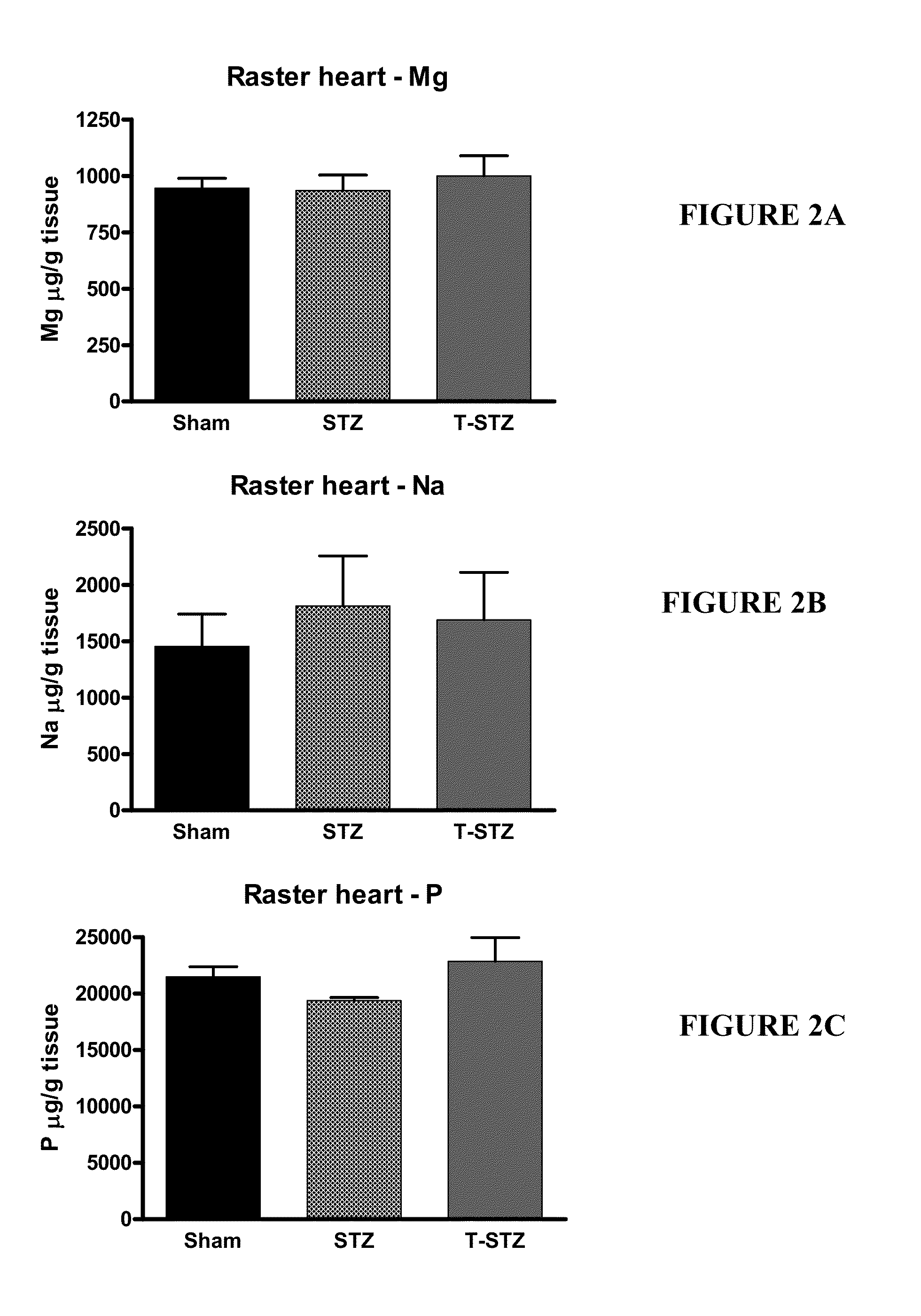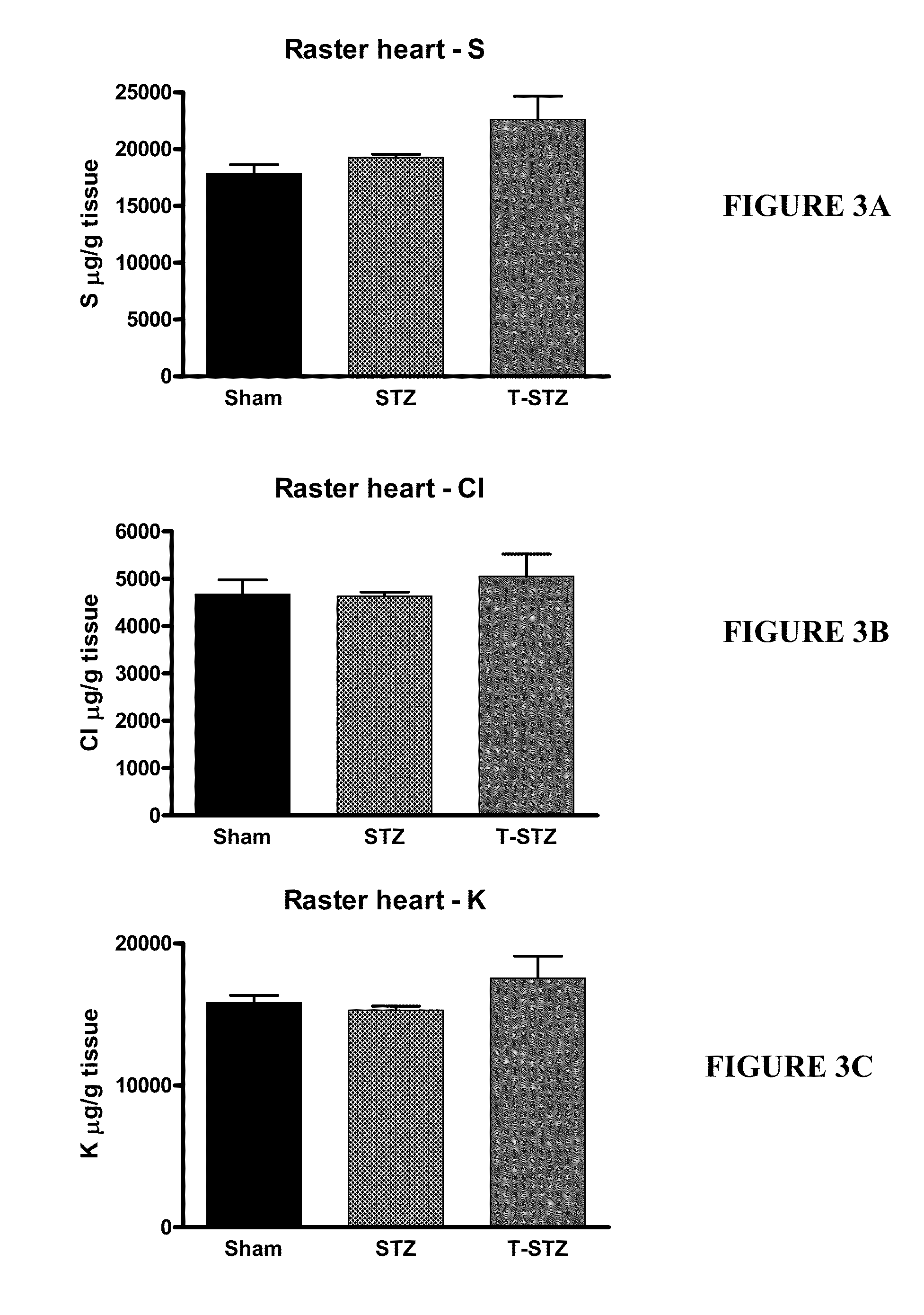Treatment of mitochondria-related diseases and improvement of age-related metabolic deficits
a technology of mitochondrial disease and metabolic deficit, which is applied in the direction of anti-noxious agents, peptide/protein ingredients, extracellular fluid disorder, etc., can solve the problems of increasing proton leakage through the mitochondrial membrane, most dangerous, damage to the membrane, etc., and achieves normalization of lowered cu+1 levels, lessening the number of mitochondria, and lowering the tgf-1 level
- Summary
- Abstract
- Description
- Claims
- Application Information
AI Technical Summary
Benefits of technology
Problems solved by technology
Method used
Image
Examples
example 1
Protein Induced X-Ray Emission Microscopy (PIXE) of Left Ventricle Wall
[0458]Male Wister rats (starting body weight from about 220 g to about 250 g) were maintained on Teklad TB 2108 (Harlan UK) rat chow and tap water ab libitum. Animals were randomized into two groups: Sham-control and diabetic (STZ). The animals were anesthetized by halthane inhalation (2%-5% halothane and 2 L / min oxygen). Rats were made diabetic by injection with 60 mg / kg streptozocin, while the control rats were given a corresponding amount of 0.9% sodium chloride. Blood glucose levels and body weight were measured 3 days post injection and once a week thereafter. Glucose levels were measured using the Advantage II system (Roche Diagnostics). Animals with recurrent glucose levels greater than 11 mM were considered to have established diabetes.
[0459]Rats receiving STZ were randomized into two groups: one group received triethylenetetramine dihydrochloride treatment (T-STZ) and the second group did not receive tri...
example 2
Left Ventricle Protein Analysis
[0467]Male Wister rats were maintained on Teklad TB 2108 (Harlan UK) rat chow and tap water ab libitum. The rats were randomly assigned to one of three groups: (1) diabetic (STZ); (2) triethylenetetramine dihydrochloride-treated diabetic (T-STZ); and (3) saline treated (control, a / k / a Sham). Rats were made diabetic by injection with 55 mg / kg streptozocin (STZ). Control rats were given a corresponding amount of 0.9% sodium chloride. Blood glucose levels and body weight were measured throughout the 16 weeks using the Advantage II system (Roche Diagnostics). Animals with recurrent glucose levels greater than 11 mM were considered to have established diabetes.
[0468]Triethylenetetramine dihydrochloride was administered to the T-STZ group via the drinking water commencing 6 weeks after STZ injections until the end of the trial period (12 weeks). The water intake from the animals was recorded for the intial 6-week diabetes development period. These figures we...
example 3
Stabilization of Mitochondria
[0487]Male, ZDF rats were maintained on Teklad TB 2108 (Harlan UK) rat chow and tap water ab libitum. Weights and blood glucose levels were monitored periodically throughout the 12 weeks. Animals with recurrent glucose levels greater than 11 mM were considered to have established diabetes. Glucose levels in obese ZDF rats stayed above 11 mM throughout the 12 weeks. Control animals had blood glucose levels between 5-6 mM.
[0488]Male, obese ZDF rats (fa / fa, n=4) and their lean littermates (+ / ?, n=4) were anaesthetized as described in Example 1 and sacrificed via cervical dislocation. The hearts were rapidly removed, and immediately placed into 10 mL of ice-cold isolation buffer (225 mM mannitol, 75 mM sucrose, 20 mM HEPES, 1 mM EGTA and 0.5 mg / mL BSA, at pH 7.4 at 4° C.). The tissue was finely chopped with scissors, incubated with 5 mg protease XXIV, (Sigma, # P38038) for 10 minutes, and then homogenised with an Ultra Turrax homogeniser. The volume was then...
PUM
| Property | Measurement | Unit |
|---|---|---|
| compositions | aaaaa | aaaaa |
| energy | aaaaa | aaaaa |
| metabolic energy | aaaaa | aaaaa |
Abstract
Description
Claims
Application Information
 Login to View More
Login to View More - R&D
- Intellectual Property
- Life Sciences
- Materials
- Tech Scout
- Unparalleled Data Quality
- Higher Quality Content
- 60% Fewer Hallucinations
Browse by: Latest US Patents, China's latest patents, Technical Efficacy Thesaurus, Application Domain, Technology Topic, Popular Technical Reports.
© 2025 PatSnap. All rights reserved.Legal|Privacy policy|Modern Slavery Act Transparency Statement|Sitemap|About US| Contact US: help@patsnap.com



